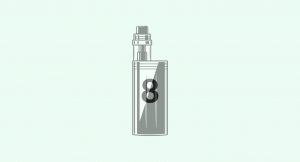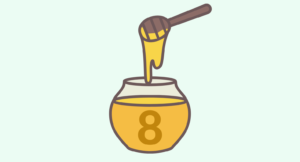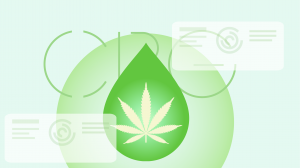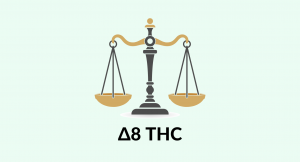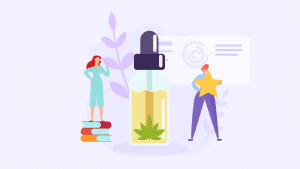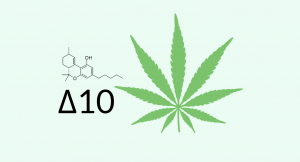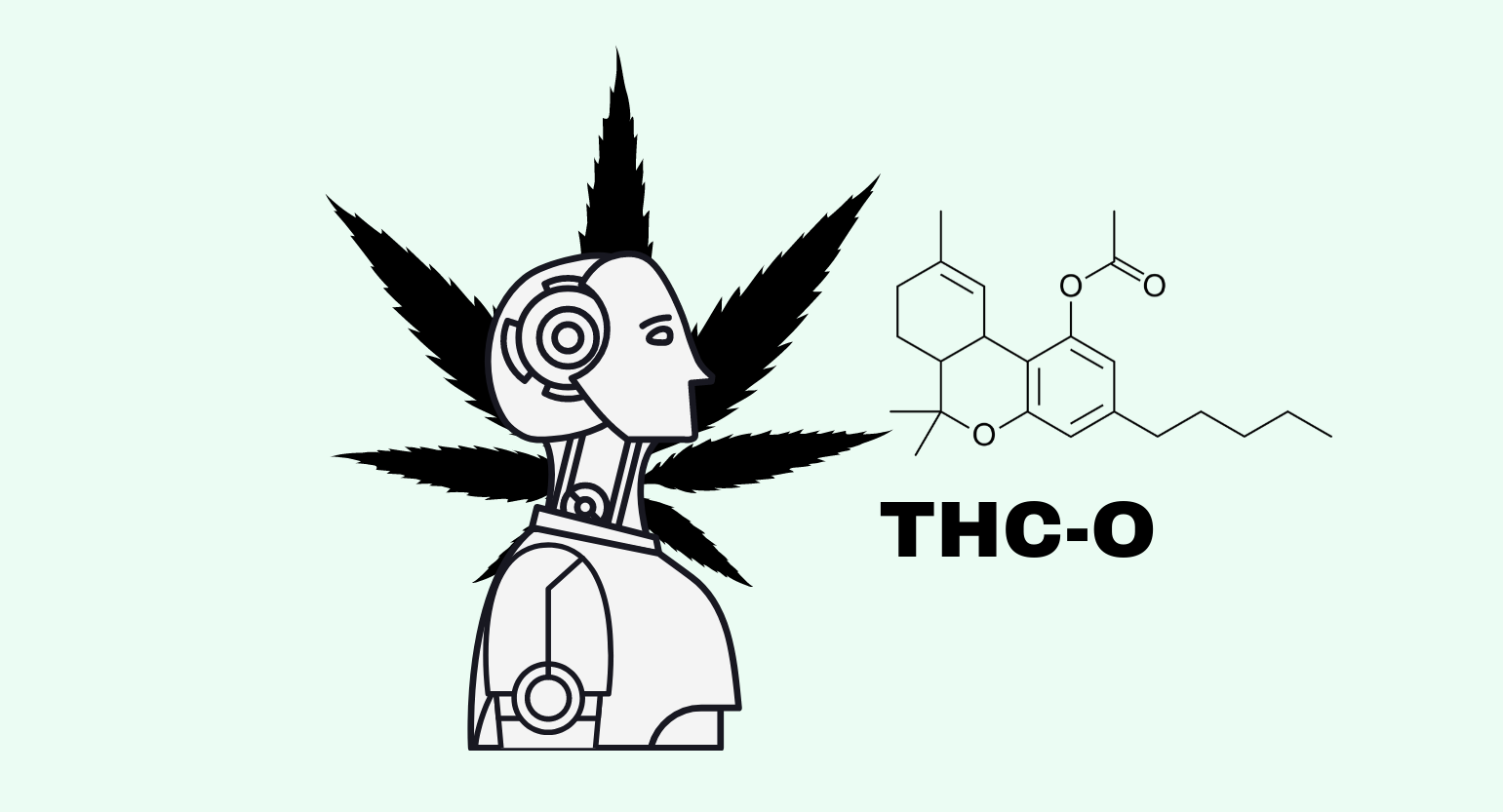
Evidence based
THC-O: The Psychedelic Cannabinoid
THC-O stands for THC-O-acetate — it’s a synthetic form of THC roughly 3 times as potent as delta 9 THC and 5 times more potent than delta 8. But is it safe?
THC-O is a stronger analog of delta 9 THC. It takes longer to kick in but produces effects that are roughly three times as strong as conventional THC.
This cannabinoid has been around for decades already, but it’s only become popular in the mainstream cannabis market in recent months — likely driven by the rapidly developing delta 8 THC market.
The concept of having more than one type of THC is well-established at this point. Users are looking beyond conventional THC at a new lineup of THC analogs on the horizon.
Here’s everything you need to know about THC-O — including the dosage, information on safety, user reports, and more.
TL,DR: WTF is THC-O?
- THC-O is a prodrug of delta 9 THC
- THC-O is 3 times more potent than delta 9 THC
- THC-O is 5 times more potent than delta 8 THC
- THC-O is a synthetic cannabinoid (it does not occur in nature)
- THC-O has psychedelic effects — altering our perception of time & sensory information
- There’s no evidence to suggest THC-O is particularly dangerous, but none to prove it’s safe either
- THC-O is not affected by tolerance formation to delta 8 or delta 9 THC
What is THC-O?
THC-O (sometimes spelled THCo or ATHC) is short for THC-O-Acetate — it’s a powerfully psychoactive synthetic analog of THC.
THC-O produces a similar high to other forms of THC — only much more psychedelic.
Low doses feel virtually identical to delta 9 THC, moderate doses are nearly psychedelic in terms of the more intense visuals and altered headspace it creates.
High doses of THC-O can be fairly incapacitating.
THC-O has an entirely different headspace compared to other cannabinoids. It’s most comparable to low-doses of mescaline but with milder visuals and a much heavier, more physically sedating effect.
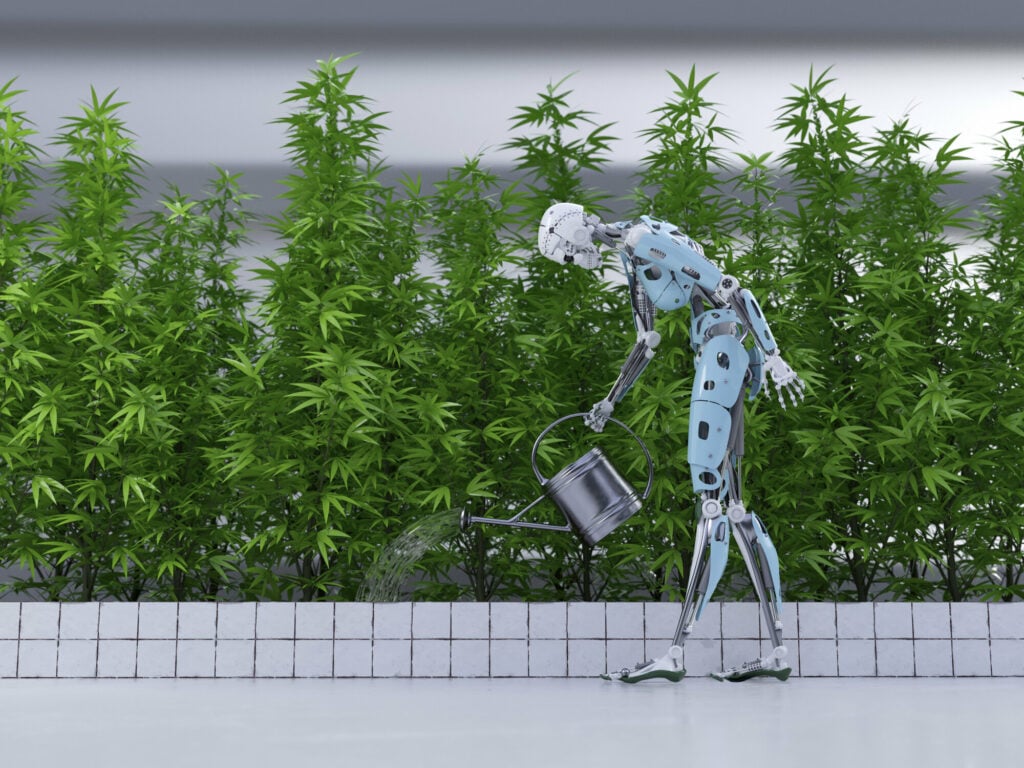
What Makes THC-O So Much Stronger Than Regular THC?
While there’s still a lot we don’t know about this substance, it’s clear the effects are much stronger than the THC you’re used to.
THC-O is a prodrug, which means it doesn’t become active until after it’s metabolized by the liver.
Once it’s metabolized, what’s left is essentially just delta 9 THC. So why would this compound be any stronger?
There’s a lot of speculation around this, but the theory is that it comes down to bioavailability.
The acetylated version of THC is significantly more bioavailable than the non-acetylated version. Once THC-O is absorbed, the unique functional group (-O) is removed — allowing the THC to exert its effects as usual — only at a much higher dose.
Another cannabinoid, called THCP, is even stronger than THC-O — with more than 30 times the potency of delta 9 THC.
How Long Does it Take For THC-O to Take Effect?
Because of the prodrug nature of THC-O — there’s a noticeable delay in the onset of effects for this substance. While delta 9 THC usually takes about 15 to 30 minutes to kick in (oral), THC-O can take up to an hour before the effects are felt.
When smoking or vaping, delta 9 or delta 8 THC usually kicks in within just a few minutes, but THC-O can take up to 20 minutes.
Once the effects start to appear, the come-on is exceptionally fast. The peak experience is usually reached within 20 minutes of feeling the first wave of effects.
A common (and potentially dangerous) mistake people often make with this compound is getting impatient and taking a second dose too early. If you took THC-O and don’t feel anything after an hour, it’s important to wait at least one more hour before taking a second dose. The last thing you want is to have both doses kick in at the same time unexpectedly.
Where Can I Buy THC-O?
It’s hard to find THC-O at the moment. There are a few companies selling it, such as Binoid, Delta Effex, or Bearly Legal — but avoid the vape carts and stick to the gummies or tinctures for this cannabinoid.
There’s some concern over the safety of vaping THC-O because of its characteristic acetate chemical group. Many users on Reddit have already started reporting delayed onset of coughs and lung congestion after vaping THC-O-acetate.
Some experts compare the risk of THC-O-Acetate with vitamin E acetate — a compound found in cheap vape carts that have been linked with a severe lung condition called lipoid pneumonia.

Is THC-O a Naturally-Occurring Cannabinoid?
No, THC-O is not found in nature. It’s one of the many synthetic cannabinoids in existence.
THC-O is considered a classical cannabinoid, which means it shares the same base structure as cannabinoids found in nature. The difference is that the functional acetate group is not found in nature.
More specifically, THC-O shares the same ABC-tricyclic structure with a benzopyran moiety. This is the defining feature of all classical cannabinoids (including CBC, CBD, delta 8 THC, and delta 9 THC.
Non-classical cannabinoids are compounds that have entirely different structures than naturally occurring cannabinoids. They’re still considered cannabinoids because they’re able to bind with the endocannabinoid receptors — or exert cannabinoid-like effects. These compounds deliver a significantly higher risk of side effects compared to classical cannabinoids.
Some examples include naphthoylindoles, cyclohexylphenols, and phenylacetylindoles.

Is THC-O Legal?
THC-O is not listed as a prohibited substance in most parts of the world — with the exception of New Zealand and the United Kingdom.
In the United States, THC-O is most likely a Schedule I substance by proxy under the Federal Analogue Act. This act was passed in 1986 and served to ban any analogs of existing Schedule I substances by default. Substances need a manual exemption to be taken off this list.
Because THC-O is an analog of delta 9 THC (which is a Schedule I drug), it’s very likely that THC-O is illegal under the FAA in the United States and most of Europe.
In Canada, THC-O isn’t explicitly listed as a prohibited substance, and there are no acts that prohibit chemical analogs — however, it’s very hard to find this compound in Canada.
What’s The Dose of THC-O?
There have never been any official studies on the optimal dose of THC-O — just lots of anecdotal reports of people testing the effects of THC-O at different doses.
The general consensus is that THC-O is about three times as strong as delta 9 THC — so the dose would be about a third of what you would normally take when using regular THC products.
The threshold dose for THC-O (the minimum dose needed to produce noticeable psychoactive effects) is roughly 2 mg oral or 0.5 mg inhaled.
This means anything higher than this is going to have psychoactive effects.
The standard psychoactive dose range is between 1 and 5 mg when smoking, and 3 and 10 mg if taking it orally as a tincture or gummy.
Psychedelic doses usually start around the 15 mg mark, but you should only ever attempt doses this high after you’re familiar with the effects of THC-O at lower doses.
It’s a good idea to start with the threshold dose whenever taking a new substance for the first time. Wait and see how it affects you before taking a higher dose on another occasion.
THC-O Dosage Summary
- Threshold dose — 3 mg oral or 0.5 mg smoked/vaped
- Standard Psychoactive Dose — 3–10 mg oral or 1–3 mg smoked/vaped
- Psychedelic Dose — 10 mg or more oral or 5 mg or more smoked

THC-O vs. THC: What’s The Difference?
THC-O is an analog and prodrug of THC. It shares the same base structure and produces very similar effects when smoked, vaped, or consumed orally.
There are many different types of THC. The most common, by far, is delta 9 THC. This is the form found in marijuana plants and in trace amounts in hemp.
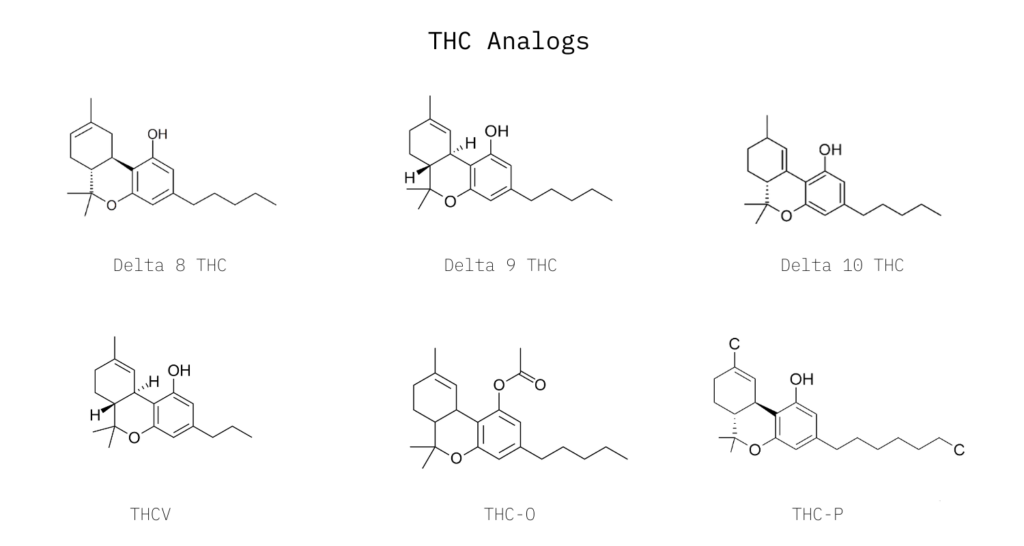
Another popular analog is delta 8 THC — which forms naturally as delta 9 THC breaks down. It’s also made synthetically through a process called isomerization using CBD as the starting material.
There’s also delta 10 THC, delta 7 THC, THCV (tetrahydrocannabivarin), THCP (tetrahydrocannabiphorol), and dozens of other synthetic versions of THC.
Comparing THC-O, Δ9 THC, & Δ8 THC
| THC-O | Delta 9 THC | Delta 8 THC | |
| Natural or Synthetic? | Synthetic | Natural | Naturally-Derived |
| Average Concentration in Hemp | 0% | <0.3% | <0.1% |
| Average Concentration in Marijuana | 0% | 15–20% | <1% |
| Primary Health Benefit | Sleep-Supportive & Analgesic | Analgesic & Anti-Epileptic | Anxiolytic & Sleep-Supportive |
| Primary Target Receptors | CB1 & CB2 | CB1 & CB2 | CB1 & CB2 |
| Psychoactivity | Very High | High | Moderate |
| Cost Per Milligram | $0.15–$0.20 per mg | $0.07–$0.13 per mg | $0.06–$0.12 per mg |
1. Chemical Structure
THC-O shares the same base structure as THC but with a unique functional group attached (an acetate group). This added portion of the molecule makes it substantially stronger than most other forms of THC.
The acetylated version of THC (THC-O) contains a polar group (acetate) that makes it much easier for the molecule to cross lipid-sensitive layers in the digestive tract and brain.

2. Effect Profile
The effects of THC-O compared to other forms of THC are comparable. All forms of THC produce a similar high — characterized by subtle alterations in how we perceive sensory information like sight, taste, sound, and touch. However, each version has some subtle differences in the emphasis of the experience.
For example, THC-O is considered a “heavier” and more psychedelic version of THC compared to most. It produces a very heavy stone that can incapacitate the user for up to a few hours. The headspace can make you zone out, and the visual experience is much stronger than virtually any other form of THC.
The experience can be very enjoyable and insightful overall — but it can also be pretty uncomfortable if you’re left feeling like you’re melting into the couch. THC-O is not for everyone, but those that like these sort of effects will likely enjoy the THC-O experience.
It sort of reminds me of that old anti-pot ad…
Comparatively, delta 8 THC has a similar heavy effect, with an emphasis on the more relaxing components of the THC high — only much milder. THC-O is roughly 5 times more potent than delta 8, if not more.
Delta 9 THC and delta 10 THC are far more stimulating in their effects and about a third the strength of THC-O when used at the same dose.
3. Cost
THC is readily available these days. It’s legal in many parts of the world, including over half the United States. The cost of delta 9 THC is relatively cheap. The main factors driving up the price are government regulation and taxation, rather than the cost to actually produce it.
Delta 8 THC is about the same or cheaper than delta 9. Because it’s made from hemp and unregulated by the federal government, massive amounts of hemp biomass are being used to produce this stuff at an industrial scale (which brings the cost down).
THC-O, however, is significantly harder to make and is illegal in the US.
Only highly skilled chemists with access to some pretty serious lab equipment can make THC-O safely. Due to simple supply and demand, the cost of THC-O can be quite high (if you can even find it).

4. Availability
THC laws are some of the most complex, contradictory, and confusing in the world.
For example, delta 9 THC is illegal on a federal level. It’s listed in the same category as heroin and cocaine. However, some states allow it if you have a doctor’s prescription for it. Other states allow it to be sold freely to anybody over the legal age limit. These laws completely contradict each other.
Delta 8 is no clearer.
Delta 8 THC is legal on the federal level but illegal in some states. Sometimes delta 9 THC is legal, but delta 8 is not.
The laws for THC-O are even less clear because there’s never been any mention of this cannabinoid on any state or federal legislature to date. It’s assumed illegal under the Federal Analogue Act — but there’s some debate to this as well.
What Are The Benefits of THC-O?
There’s never been any formal research on THC-O to help elucidate its potential benefits. However, anecdotal reports suggest it has all the same general benefits as the other forms of THC (pain-relief, sleep-support, anxiety-support, appetite stimulation) — but stronger.
This cannabinoid has a particularly heavy effect on the body, which suggests it could be a useful isomer for managing chronic pain, anxiety, or insomnia.
Is THC-O Safe?
It’s unclear whether THC-O is entirely safe or not.
There has never been any reported cases of overdose on this cannabinoid and it’s clear it doesn’t have the same level of risk as the synthetic “non-classical” cannabinoids found in products like K2 or Spice.
Nonclassical refers to a chemical structure completely unrelated to THC or other cannabinoids. They activate the same receptors but share nothing in common chemically with cannabis.
In the early 2000s, synthetic versions of THC were being sold around the world as a “legal high.” However, many of these compounds proved dangerous, and there were even a few deaths. Some of these compounds caused severe lung injuries, depression, psychosis, heart attacks, kidney damage, seizures, and more.
THC-O doesn’t appear to be associated with any of these negative effects and appears to share a similar safety profile to delta 8 and delta 9 THC.
With that said, there is one major concern for THC-O when used in the form of dabs or vape pens.
Lung Damage
Vitamin E acetate was once used as an additive to vape pens. When heated, it created a variety of harsh byproducts that caused damage to the lungs. This resulted in severe lung diseases in some people — such as a condition called lipoid pneumonia. This condition can be fatal or leave long-term scarring and damage to the lungs.
Some experts believe the acetate group in THC-O may have similar effects on the lungs — but this is only a theory. More research is needed to understand the true safety profile of this cannabinoid.
Adulteration & Impure Products
The market for THC-O is only just now starting to creep out of the underground. Companies such as Binoid and Bearly Legal are the first of the “mainstream” noid brands to start carrying THC-O publicly (despite the fact that it’s most likely illegal).
Neither of these brands offers anything in the way of testing for their THC-O products to prove they’re pure. While some of this comes from the fact that it’s simply not that easy to test THC-O — it’s still not an acceptable excuse.
THC-O is made with some extremely toxic substances, and there’s a lot that can go wrong during the process. We need to be testing these products to ensure they are what we think they are. Even if we can’t test the potency of THC-O very accurately yet, we can test for the presence of contaminants or unknown chemical byproducts in the sample — but nobody is doing this.
Beyond these two pioneering brands, it only gets worse. Most of the THC-O is sold in the form of a vape cartridge, which could contain literally anything inside. As if delta 8 wasn’t sketchy enough, THC-O is on another level entirely.
Related: Best delta 8 THC vape carts (companies that provide testing).
Side Effects of THC-O
THC-O is very strong, so it’s no surprise side effects are fairly common with this compound.
The most commonly reported side effects for THC-O include:
- Nausea and vomiting
- Dizziness
- Seizures
- Sedation & lethargy
In very high doses, this compound can be incapacitating. Users report being unable to move around very easily, feeling lethargic, and finding it difficult to maintain a headspace coherent enough to communicate effectively.
Harm Reduction & THC-O
There’s always going to be some inherent risk when using ultra-pure, high-potency substances. THC-O is no exception.
Here are 7 ways to minimize the potential for harm when using THC-O:
- Always start with a very low dose first before moving on to a larger dose on another day (referred to as an “allergy test”)
- Always order THC products from reputable vendors
- Ask the vendor for lab analysis to make sure the compound you’re using is pure
- Never use THC-O if you have underlying heart disease or a family history of psychosis or schizophrenia
- Never use THC-O if you’re taking other prescription medications
- Never mix THC-O with other illicit drugs or alcohol
- Always have someone responsible and trustworthy with you while using this substance for the first time
Can THC-O Cause Me To Fail My Drug Test?
There’s a lot of reports that THC-O won’t make you fail a drug test because it’s a different molecule.
I call bullshit.
THC-O is a prodrug for delta 9 THC, which means it ends up leaving the body in the exact same form. This will no doubt be picked up on a drug test for THC.
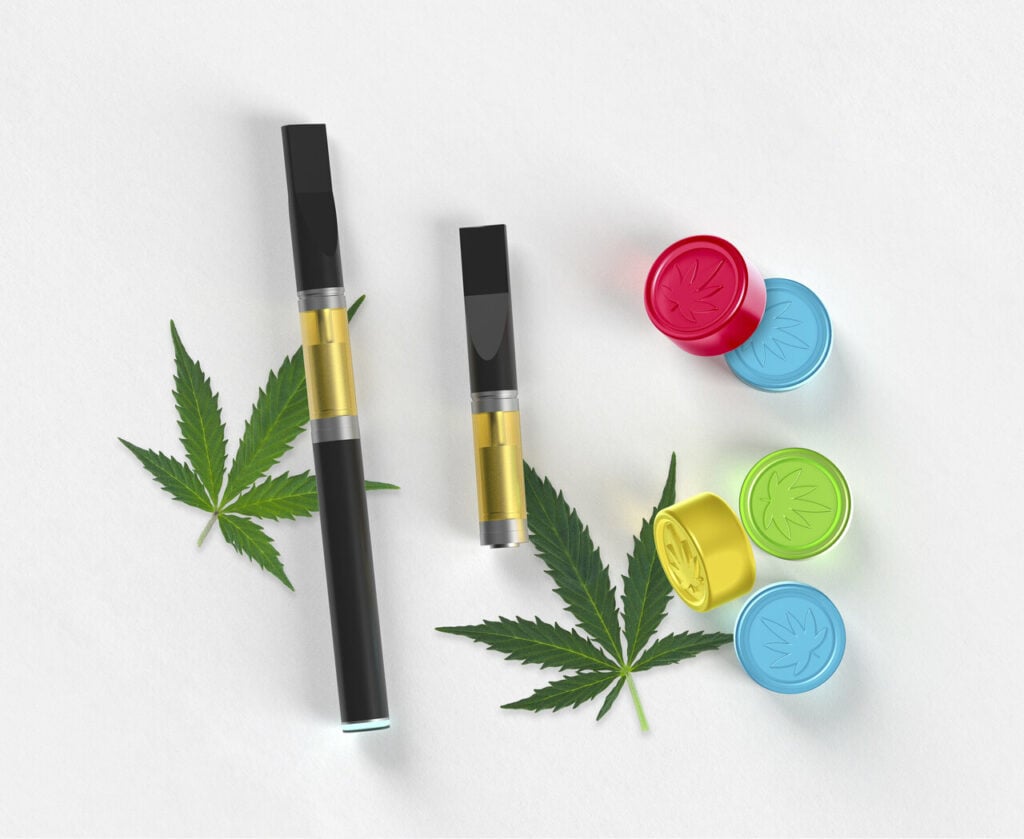
How to Use THC-O
THC-O comes in all the same formats you’d expect to find any THC product. Here’s a quick breakdown of the different types of products we’re seeing on the market these days.
1. THC-O Tinctures
Tinctures are clearly a superior method of consuming cannabis products. They’re fast-acting, efficient, and save your lungs from the harmful side effects of smoking or vaping. We consider tinctures (or gummies) to be the best and safest method of consuming THC-O.
Companies that sell THC-O Tinctures:
2. THC-O Distillate
You’ll need a good connection to find THC-O distillate (THC-O dabs). It’s hard to find — most likely because of how it looks. This stuff isn’t quite the same as a normal THC dab — it’s thick, black, and oily. It’s not a very enticing substance to be smoking and can be hard to work with because of how fluid it is.
3. THC-O Vape Carts
Until the potential risks of vaping THC-O are investigated in more detail, we recommend avoiding this method of consumption. The acetate group on the THC-O molecule is likely to cause similar issues as vitamin E acetate that was found to cause severe lung injuries in vapers a few years ago.
4. THC-O Gummies
THC-O gummies are made by infusing the cannabinoid with a delicious fruity gummy candy base. Gummies are an excellent way of using any form of THC. They’re relatively safe, easy to calculate doses, and taste great.
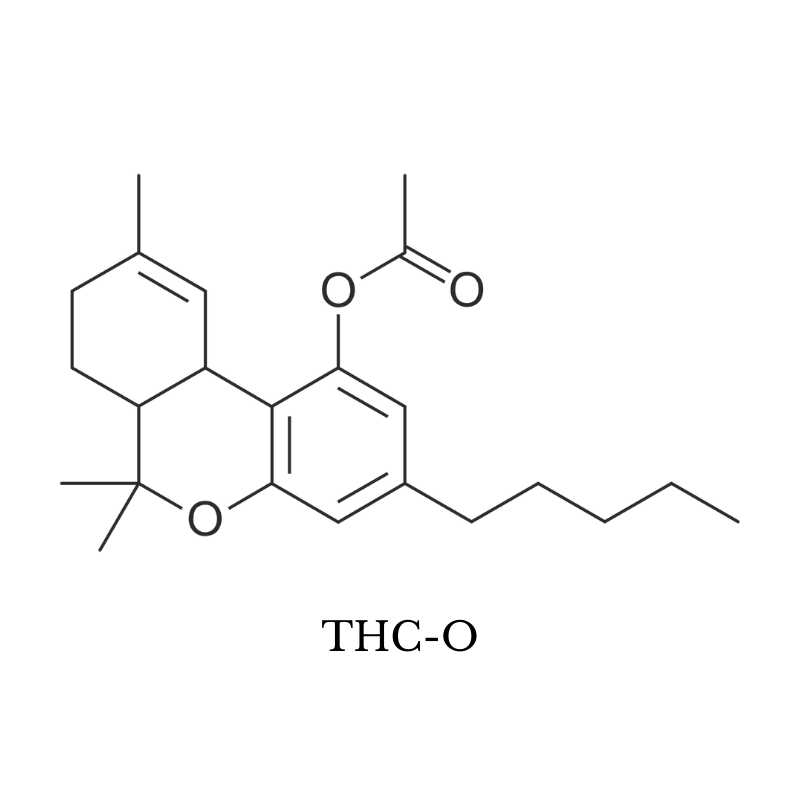
How is THC-O Made?
The process for making THC-O overlaps with the steps used to create heroin from morphine. The concept is virtually identical — take an existing compound and add an acetate group to increase bioavailability.
We highly recommend you don’t attempt to make THC-O at home. Not only are you likely to get into trouble with the law by just sourcing the raw materials, but you could also blow yourself up, inhale noxious fumes, or poison yourself on an impure final product.
Here’s what makes synthesizing this compound so dangerous.
At least one part of the process for making THC-O requires refluxing in strong acid. This causes the flasks to have a strong vacuum while heated, which runs the risk of an implosion — sending boiling acid, glass, poisonous vapor, and highly flammable liquids into the air.
Additionally, the process causes an off-gassing of peroxide gas into the air, which is explosive. A single spark — from a flame, static shock, anything — can cause the whole thing to explode.
What’s the Future of THC-O?
THC-O is not a new chemical — it’s already been around for several decades. However, only recently (within the last few months) has it really started to become popular. It’s likely the rise of another THC analog, delta 8 THC, is driving the new interest in this and other THC analogs.
Prior to 2019, there was only one type of THC — delta 9 THC from marijuana. Now, there are several different types, each one promising a unique experience of its own.
It’s likely this trend will continue, and the use of THC-O will keep growing. However, because of uncertainty in how this compound is regulated, mixed with the challenges of producing it and potential safety risks — it’s unlikely this compound will ever go mainstream the same way delta 8 or delta 10 have in recent months.




